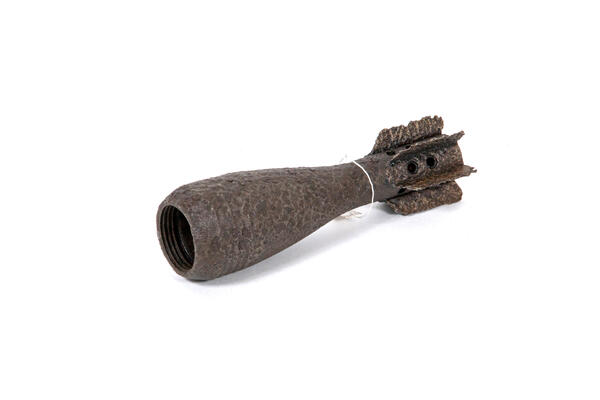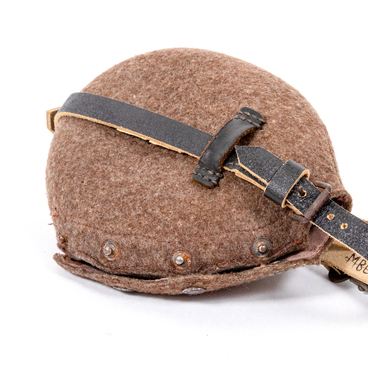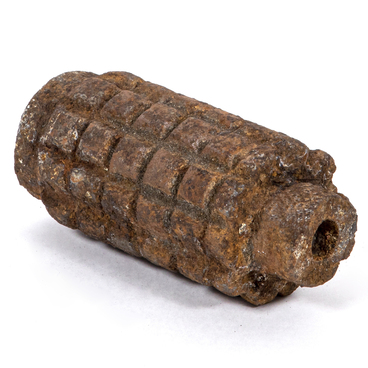The first mortars were created in the early 20th century during the Russian-Japanese war. Russian officer Leonid Gobyato is considered to be the inventor of this weapon type. After the October Revolution, on the orders of Vladimir Lenin, the Commission for Special Artillery Experiments began to study and carry out experiments to develop and improve the existing mortar weapons.
By the end of the 1930s, in the USSR, under the leadership of artillery and rocket engineer Boris Shavyrin, 50-mm, 82-mm, 107-mm, and 120-mm mortars, which were superior in combat power to the foreign analogs, were developed and adopted. Due to the difference in calibers (the domestically made mortars were a couple of millimeters larger), the Red Army soldiers could use captured ammunition. A combat ready mortar weighed about 10 kilograms and could fire up to 30 bombs per minute. Mortar shells hit the targets within a radius of 50 to 800 meters.
The Red Army used mortars throughout the Great Patriotic War in almost all military operations. 50 millimeter caliber mortars, designed for fire support of platoons and companies, became the most popular type of light artillery weapons. However, their popularity gradually declined, as the battalion 82-mm mortars proved to be more effective. The decisive disadvantage of the weapons was their low range — it was only a few hundred meters. Because of this, the mortar crews had to be positioned at an extremely short distances to the enemy. Their positions were not secure, and mortarmen were often killed. In 1943, the command decided to cease the production of the 50-millimeter caliber company mortars and its ammunition and remove them from the armament of the Red Army. By the end of the war, only partisans used them.
The museum displays a casing of a mine designed for a 50-millimeter mortar of the 1938 RM-38 model. A mine of this caliber could also be used with other modifications of these mortars — the 1940 and 1941 models.
Caliber of a mine is the diameter of its widest part.
The case is made of dark-colored metal and tear-drop shaped. It is also equipped with a stabilizer with 6 fins. Such artillery ammunition was called a mortar round. It consisted of the fragmentation mine itself with the main fuze M-50, and the throwing cartridge (or tail cartridge), which was placed in the stabilizer tube. It had a firing charge of about 4 grams of smokeless powder.
By the end of the 1930s, in the USSR, under the leadership of artillery and rocket engineer Boris Shavyrin, 50-mm, 82-mm, 107-mm, and 120-mm mortars, which were superior in combat power to the foreign analogs, were developed and adopted. Due to the difference in calibers (the domestically made mortars were a couple of millimeters larger), the Red Army soldiers could use captured ammunition. A combat ready mortar weighed about 10 kilograms and could fire up to 30 bombs per minute. Mortar shells hit the targets within a radius of 50 to 800 meters.
The Red Army used mortars throughout the Great Patriotic War in almost all military operations. 50 millimeter caliber mortars, designed for fire support of platoons and companies, became the most popular type of light artillery weapons. However, their popularity gradually declined, as the battalion 82-mm mortars proved to be more effective. The decisive disadvantage of the weapons was their low range — it was only a few hundred meters. Because of this, the mortar crews had to be positioned at an extremely short distances to the enemy. Their positions were not secure, and mortarmen were often killed. In 1943, the command decided to cease the production of the 50-millimeter caliber company mortars and its ammunition and remove them from the armament of the Red Army. By the end of the war, only partisans used them.
The museum displays a casing of a mine designed for a 50-millimeter mortar of the 1938 RM-38 model. A mine of this caliber could also be used with other modifications of these mortars — the 1940 and 1941 models.
Caliber of a mine is the diameter of its widest part.
The case is made of dark-colored metal and tear-drop shaped. It is also equipped with a stabilizer with 6 fins. Such artillery ammunition was called a mortar round. It consisted of the fragmentation mine itself with the main fuze M-50, and the throwing cartridge (or tail cartridge), which was placed in the stabilizer tube. It had a firing charge of about 4 grams of smokeless powder.



